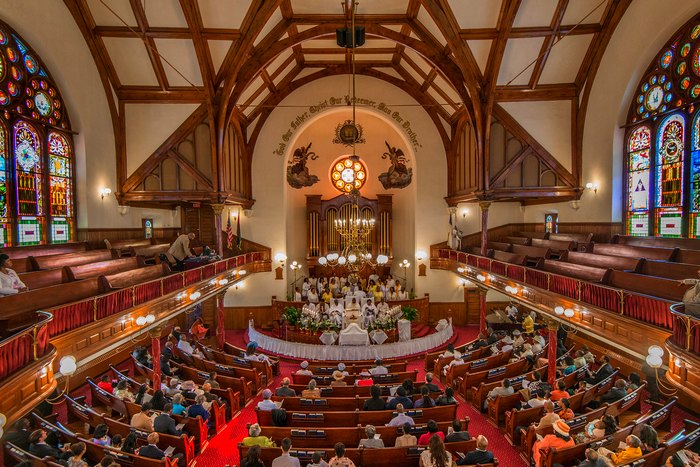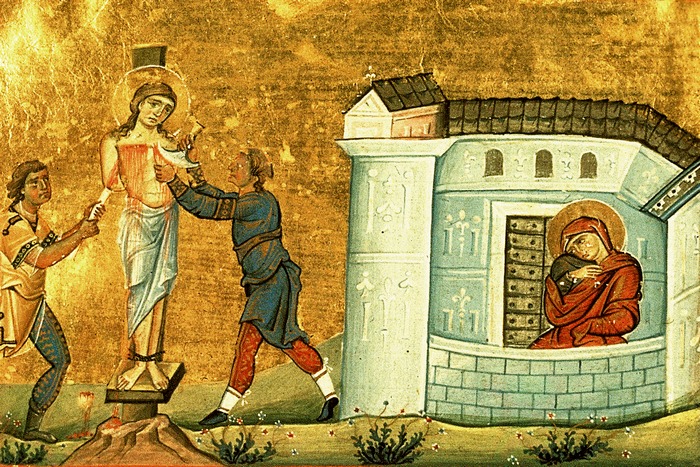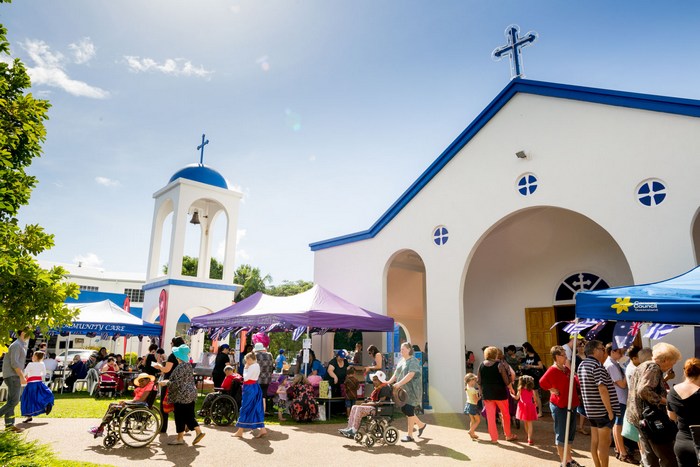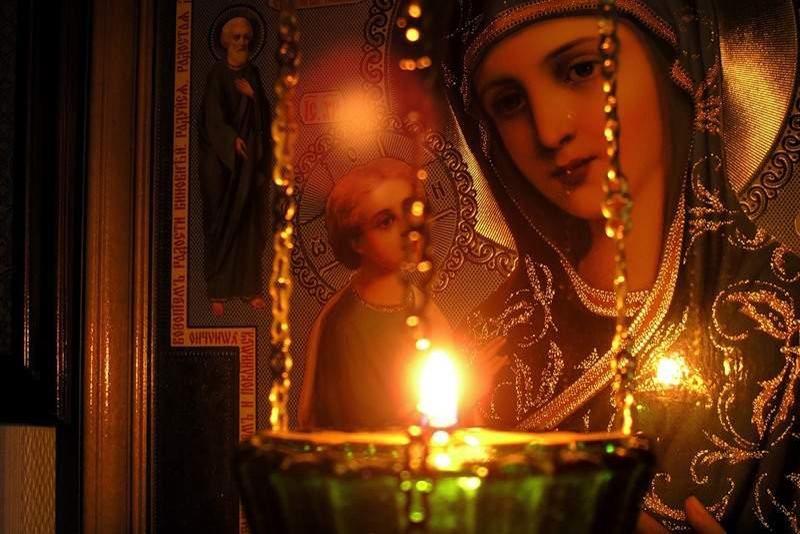
Some years back, there was a point in my life when I didn’t give a second thought to the Saints. I really didn’t see how they had any place within my faith. In Bible College and in Protestant seminary, I was fed the idea that saints were either a type of good luck charm to sell my house, a statue in your yard to attract birds, or they were individuals likened to magicians whose bones were exploited in medieval times. Fortunately, I had a life-changing experience that dispelled my incorrect notions about Saints and changed my whole paradigm in the way I view these holy servants. I now can’t imagine myself living my life without their guidance and assistance.
There was a time in my life where I was a director of a large Protestant homeless shelter in a major Northeastern city. In that director role, I was responsible for the physical and spiritual wellbeing of thirty-men that were recently released from prison or who had been homeless on the streets. One thing I noticed as I ministered to these men is that I kept hearing a similar story about the churches that they attended. They would go to churches where their charismatic preachers would tell them something like: “If you tithe to our church, God will bless you abundantly.” This is a common theological mark of the health and wealth/prosperity-movement within some Protestant circles. Many of these formerly homeless men would offer all the money they had to that pastor in order to receive the promised blessings. Sadly, those blessings of wealth, health, and all their desires never came to fruition for those men. Instead, the men’s lives would continue to cycle through immense poverty and hardship.
I found myself wanting to prove to these spiritually manipulated men within our program that not all churches operated with this prosperity-gospel technique. I came up with the idea to take “fieldtrips” to local churches so that they could meet different church leaders and see different types of church traditions that differed from those over-promising pastors. On these church fieldtrips, the group of gentleman was able to see one of the first AME churches, Reformed churches, main-line churches, and hipster churches. The group of men asked plenty of inquiring questions and got to take wonderful church tours.

One of the last churches in the area that we visited was a large, Greek Orthodox Church. Up to that point, I myself had almost no familiarity with Orthodoxy and so as we ventured to this odd-looking church with Greek inscriptions on the outside of its church building, I had no idea what to expect.
The Orthodox Priest, dressed in his cassock, graciously welcomed our group at the door. As we entered into the narthex of the church, we were welcomed into the space by a beautiful picture resting on an ornate stand. Emblazoned in gold and jewels, the icon depicted a female saint. One of the men in our group blurted out at the sight of the icon, “why do you have graven images?” He clearly was leaning on his understanding of the Old Testament and saw this icon as a type of graven image and an offence to God.
Hearing this question, in a patient and kind way, the priest explained that on this particular day, the Orthodox Churches celebrates the Saint Agatha. The Priest then began to describe to our group Saint Agatha’s life. He stated that Saint Agatha lived in Italy in the third century and that she was a follower of Christ. Agatha was a beautiful young woman, whom many men wanted to marry. But Agatha, as a follower of Christ, wanted to retain her holiness and to live set apart for the sake of her Savior and chose to not marry. A wealthy pagan by the name of Quintianus, captivated by Agatha’s beauty, asked for her hand in marriage. Agatha denied Quintianus’ advancements and declared to him that she wanted to remain a virgin for the entirety of her life. Quintianus, enraged by Agatha’s rebuke, first proceeded to parade Agatha into the town center and with the townspeople watching, Quintianus had his servants cut-off Agatha’s breasts. Quintianus, again asked a final time for Agatha’s hand in marriage, as if the previous inhumane mutilation could compel someone toward marriage, and again Agatha rebuked him and pledged herself to Christ and to holiness. Again, fueled by rage, Quintianus as a last final act to exploit Agatha’s desire for purity, had her stripped bare in front of all of the town’s onlookers and then had her dragged to her death tied behind a horse-drawn carriage.

As the Priest told us this dramatic story, I noticed out of the side of my eye, one of the gentlemen in the group was acting a bit strange. He was sort of pacing around, clenching his fists, and mumbling under his breath. He looked as if he was teetering the line between anger and crying. I hadn’t really known this particular man, who we will call “Shawn,” as he was new to the group and to our program. Shawn was visually intimidating as he stood 6 foot 3 inches, had intense eyes, and tattoos all over his face. He looked similar to the giant man on the movie The Green Mile, but scarier.
My mind was racing as I began noticing this gigantic man become more and more frustrated. Bad scenarios played out in my head: Was he going to knockout this kind, old priest? Was he going to breakdown in tears? Heaven forbid—would he try to damage the icon of Saint Agatha? I decided, hesitantly, to go over and speak with Shawn to attempt to calm him down. Having not yet established trust with Shawn, I tried my best to be sympathetic to the large, pacing man.
I said to him, “Shawn, what’s going on man? I can tell you’re frustrated…is there anything I can do for you right now?”
Still pacing, clinching his fist and with tears in his eyes, he angrily said to me, “Why would they do this?”
“I don’t know Shawn, pictures aren’t a part of my tradition,” I answered him assuming he was talking about the icon.
He shrugged off my answer, “No, why would they make her a saint?”
Again, winging it: “I don’t know Shawn, I don’t fully understand the saint thing.”
He replied, crying at this point, “Why would they make her an example?”
“I don’t know, Shawn” is all that I could come up with. Shawn didn’t punch the priest or turnover the icon.

I met with Shawn the following day to debrief the situation, as I wanted to figure out what had happened the previous day. Shawn broke down that day in my office. He explained to me how his mom had been raped as a teenager and that her pregnancy with Shawn was the result of that rape. He described to me in graphic detail how almost everyday his mother reminded him that he was the result of rape and she routinely punished him for it. Shawn then described how as a result of all the pain he felt in his life, and all the mistreatment he had received, he too proceeded to hurt others throughout his life.
He then explained to me that in hearing Saint Agatha’s story it was unimaginable how someone like that, someone abused so harshly, could be an example for the Christian faith. It was even more puzzling to Shawn that someone like Agatha could be considered a saint. He was awestruck at how God and a Church could look at someone so damaged, so broken, and declare that someone like Agatha is holy.
Shawn saw himself in Saint Agatha’s life. He saw in her life a guide for his own. He saw in her hope for his own torture. He had found a Savior who did not deem him cursed or too broken for salvation. He had found a Church that gave him the opportunity, even with all of his shame and brokenness, to become something beyond his shortcomings. He began the process of recognizing that within Christ there was hope for him to become holy and to even to become an example of the faith for others. There was a place and purpose within his life and that all of the pain he experienced could be a part of his turning toward holiness. Shawn joined that Orthodox Church. Seeing a 6’3’’ African-American man with face-tattoos standing amongst Greek yia-yias at a Greek-festival laughing together and sharing jokes was like catching a small glimpse of heaven.

Saint Agatha is recognized as a Saint within the Eastern and Oriental Orthodox, Catholic, and Anglican traditions. She is just one of thousands of shining beacons of holiness in the church’s history of raising up holy and set apart disciples of Christ. Saints aren’t vessels to help us find lost items as I had previously thought. Saints exist to be vessels for us as tangible witnesses that the places of loss within our own hearts do not define who we truly are. Rather, the fact that Christ sees all of us as bearing the image of God is the foundation for us to continue to pursue Christ and the holiness that stems from being within his fold.
Saint Augustine once wrote, “There is no saint without a past, no sinner without a future.” For people like Shawn, and myself, the saints show us by their examples that we are destined for greatness as even the most shameful moments we experience in our life are merely part of the journey of transformation within the theosis process as we are becoming holy like God is holy. Saints are alive in Christ, but they lived as holy humans when they were on earth. Because of their holiness, saints like Agatha fully understand the challenges and triumphs that we experience in our lives and because they know our hearts, we can look to them as guides and beacons for our own lives, and we can graciously ask for their prayers as they worship Christ in paradise.
Saint Agatha and all the Saints pray to God for us!



